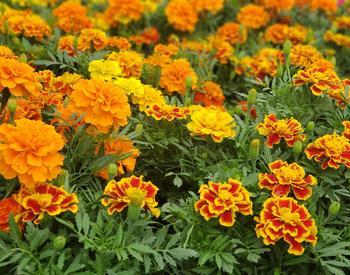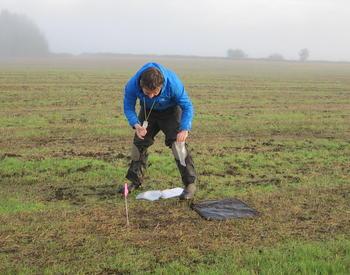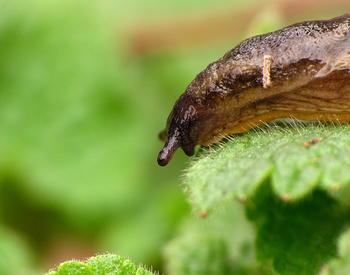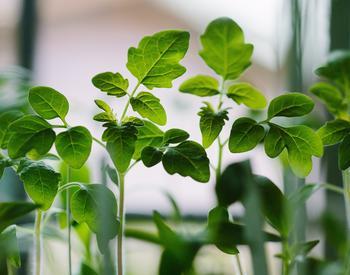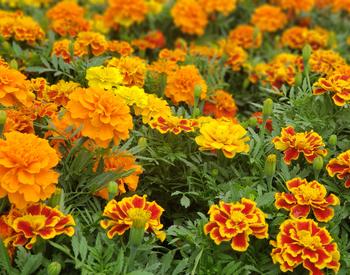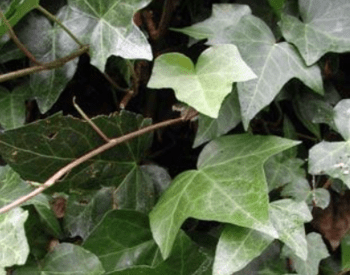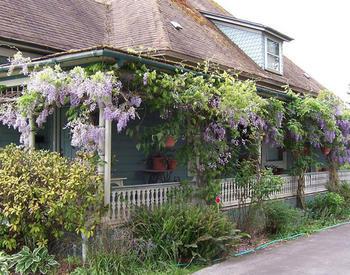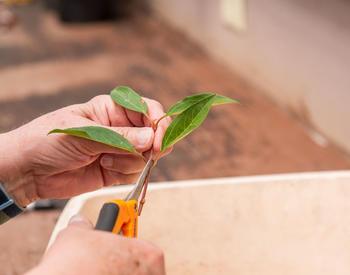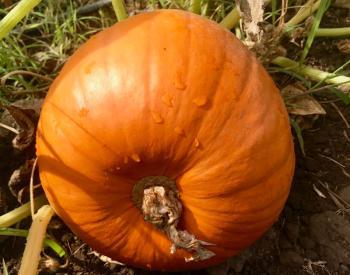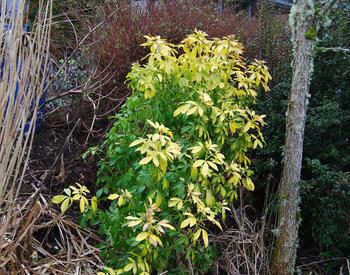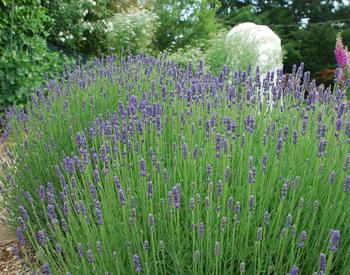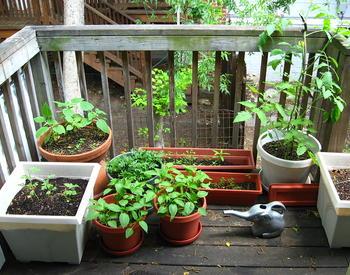Transcript
I'm standing here in Northeast Portland in a really urban neighborhood that is
typical of urban areas in the Willamette Valley and surrounded by a whole variety
of ornamental and native plants. Different types of plants, even some
edibles, are incorporated into the design around this particular rain garden.
I'm standing here in this particular rain garden with a beautiful example of
several classic rain garden plants that are built down in the base, or the moist
part of the rain garden, one of which is this Douglas spirea. So Douglas spirea
produces really beautiful pink-purple and almost a white-colored flower in
different varieties and it's very tolerant of flooding conditions.
We also have Juncus effusus down here, which is another very flood-tolerant plant and
slough sedge, which is a very very common sedge found in wetlands all over the Pacific Northwest.
Easy to come by and very very low maintenance.
And then around this rain garden, you'll see some really unusual plants that you wouldn't
normally associate with them. These are the kinds of plants you would find in
vegetable gardens or in your typical home perennial garden.
We've got daylilies over here.
We've got gladiolus that are coming up.
There are some volunteer sunflowers. All kinds of great plants.
There's even some asparagus growing behind me here.
So this particular rain garden designer
decided that they wanted their yard to be multi-purpose.
Some of it's edible some of it's just for ornamental purposes.
But the beauty of this is that the rain garden is a nice focal point.
Okay so here's another really cool plant.
This is sisyrinchium or yellow-eyed grass. It's growing right here.
Really beautiful little plant. These are kind of tolerant on both the wet and the dry
that you get the rain garden. In this case, he's got these plants planted on
the berm or the top of the rain garden. He's also got sword ferns over here.
He's got all kinds of really cool plants. There's even some Irish moss growing in here.
There's a bleeding-heart growing in this area.
There are lots of bleeding hearts over here if you take a look right there.
There's all kinds of stuff. This sedum is a beautiful example of a common
ornamental plant you could find in a rain garden. And this is one of my all-time favorite plants.
This is a New Zealand bronze sedge. It makes a beautiful plant.
Nice accent and it grows really well in some cases in the base, or the wet part
of the rain garden, and in many cases in the drier part of the rain garden.
So here's asparagus of all things growing at the top of a rain garden and
here's another spirea, daylilies. This is the Western bleeding-heart, a native plant.
You can also find horticultural varieties of it. Daylilies, which grow
really well in a variety of conditions but obviously in this case they don't
want to put them in the base because they won't really tolerate being flooded all the time.
Good old sunflower, gladiolus, a very small Japanese maple.
Beautiful maple. And here's another classic rain garden plant that many
people put in, which is dogwood. There's several different varieties of dogwood
that will do well in a rain garden. They can be fairly tolerant of the moist and
also fairly tolerant of the dry. Here's a mock orange beautiful flowering plant
that has very very fragrant flowers that bloom in the springtime and will just
fill your garden with with really nice fragrance. There's a hellebore growing
down here that bloom in the wintertime, but in this case, we've got a nice foliage in the summer.
Okay, so I'm standing here next to the outflow of the rain garden.
And it really it's just an outlet that flows directly across the sidewalk.
There's no trench drain. There's no connection to a storm sewer.
But what is happening in this rain garden is that it's graded very carefully to flow back
that way towards the other end of the rain garden. So when it fills, according
to this owner, the rain garden fills all the way to the back and then flows in
this direction towards [inaudible]. A rainy day in a typical urban center like Portland,
the rainwater has no place to go when it hits these hard or impervious surfaces.
So as it's striking on them, it flows off in great big sheets or sheet flow,
where it runs off until it hits the roadway and is
conveyed to a storm drain.
Robert Emanuel, Water Resources and Community Development Specialist, describes some of the salient characteristics and plants that define this rain garden. He shows us:
- Douglas Spirea (Spiraca douglasii)
- Common Rush (Junkus Effusus)
- Daylily (Hermrocallis)
- Gladiolus, Bleeding Heart (Diccentra)
- Dogwood (Cornus)
- And much more.
Produced by Oregon State University Extension and Engagement.

